February / March 2019
After a month on the Maldives this time I wanted to get to know the northern half of Sri Lanka. You can find the report about my last year’s trip to the southern part of Sri Lanka here.
Because of the many photos I divided this travel report into two parts. The link to the second part can be found here and at the end of this website.
The first two days I prepared my Sri Lanka trip in Negombo, a coastal town near the airport.
Negombo
Angurukaramulla Temple
In Negombo, over 90% of the population is Catholic. All the more impressive was the Angurukaramulla temple of the Buddhist minority.
Moonstones are reminiscent of the teachings of Buddha and can be found on the floor in front of stairs and entrances to Buddhist temples. The symbols stand for the phases of the eternal Buddhist cycle of rebirth and decay.
The Moonstone of Angurukaramulla Temple

A mother with her child

Dambulla
I traveled further inland to the small town of Dambulla 130 km away.
Royal Rock Temple
The Royal Rock Temple impressed me very much and was one of the highlights of my Sri Lanka trip. It is located on a 150 meter high hill. The cave is divided into five chambers, is over 100 meters long and contains more than 150 Buddha statues. It has been used as a place of worship since the 1st century BC.
Inside the Royal Rock Temple
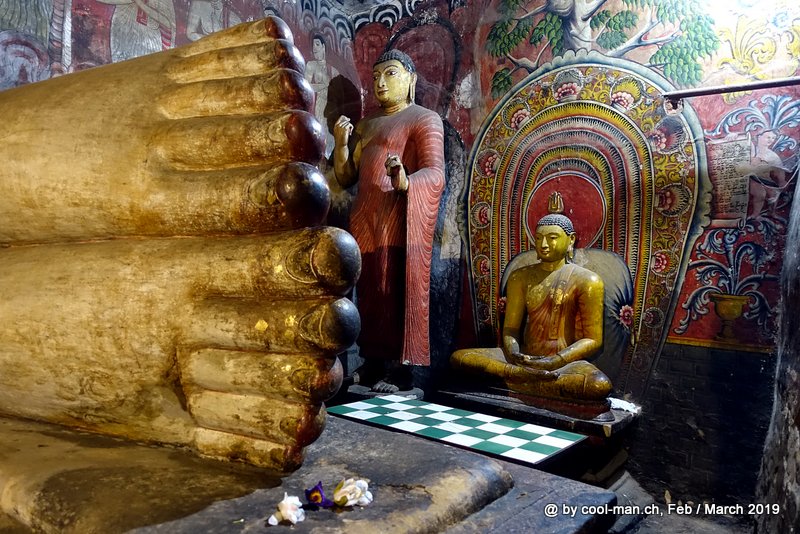
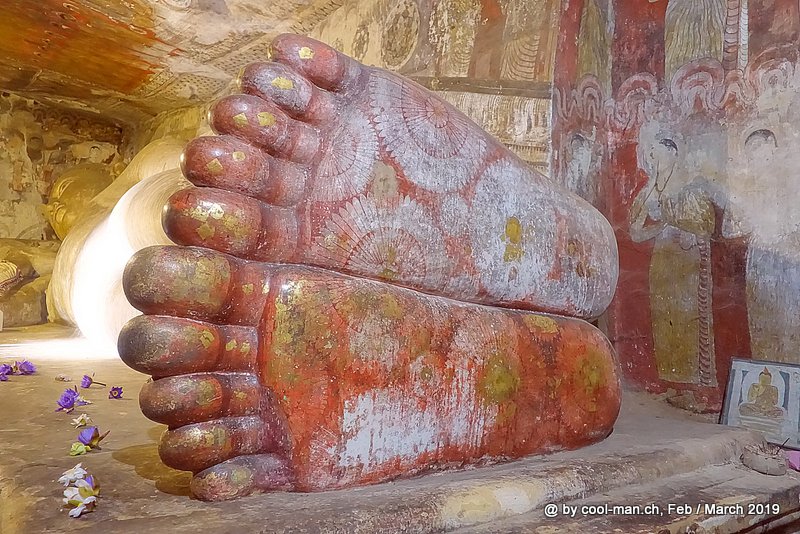
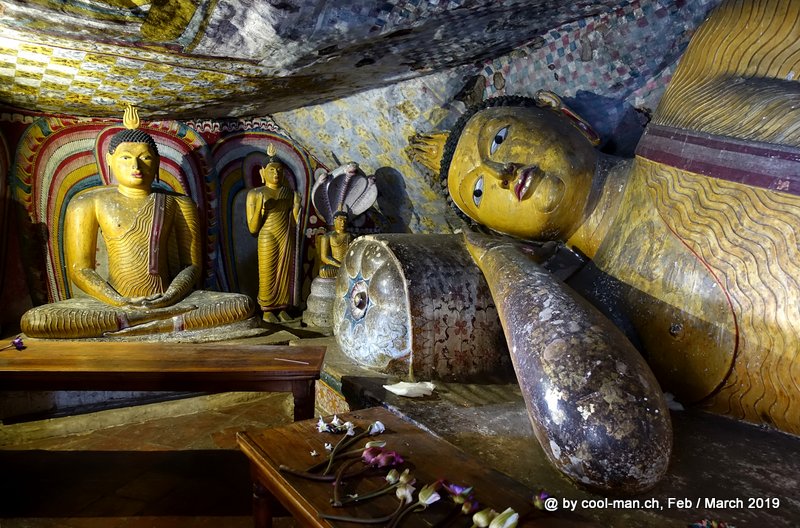

A painting on the ceiling
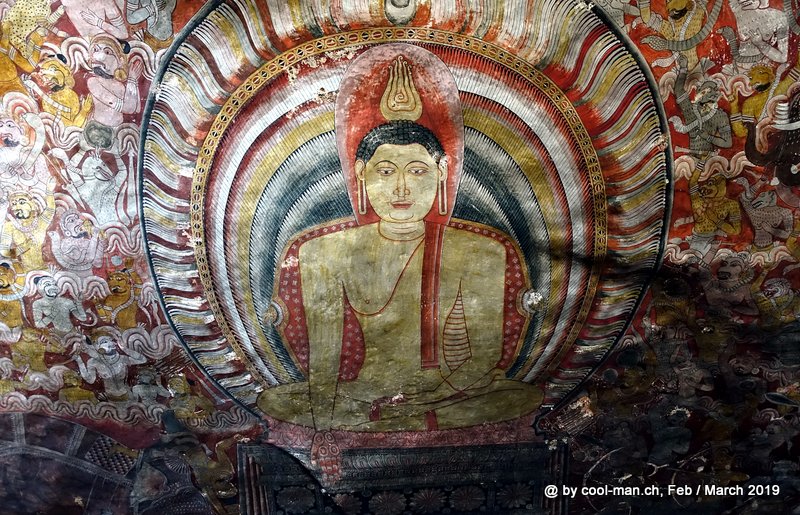

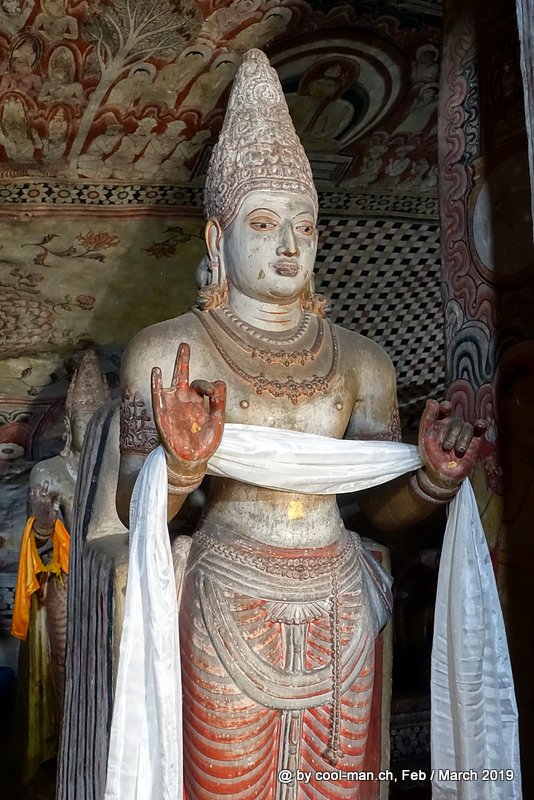

A fountain in front of the temple
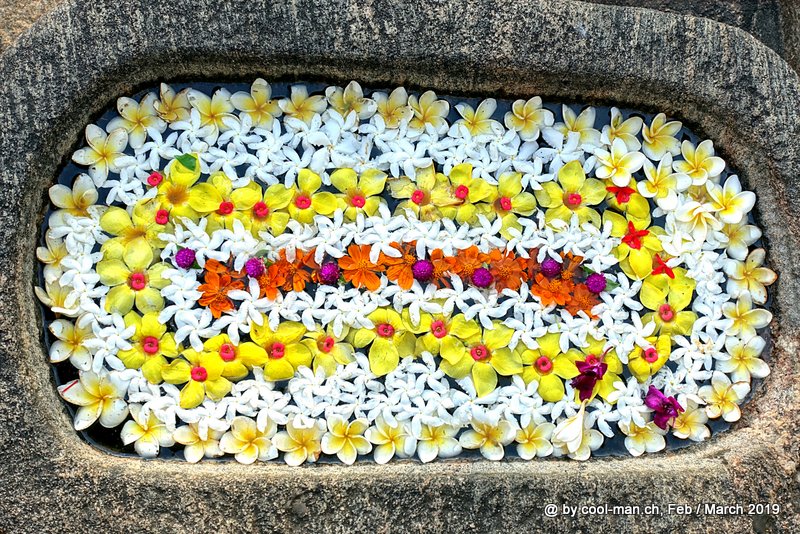
I enjoyed the sunset from the Temple Hill
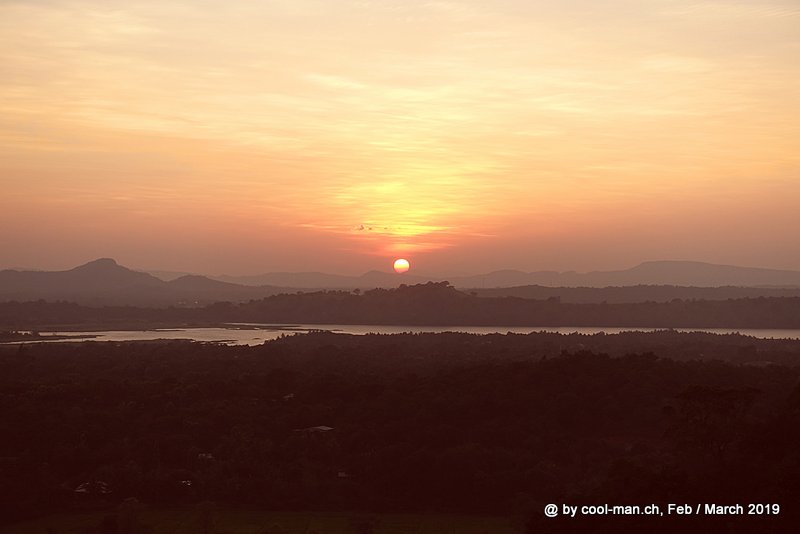
At the foot of the rock temple hill the Golden Temple with a 30 meter high Buddha statue was inaugurated in 2000. I did not like it, because this Buddha has a strange, strict facial expression and at the lower part of the face the gold color already flaked off.
Popham’s Arboretum
Shortly after dark I visited Popham’s Arboretum, a private forest area. In a small group and with two guides we tried to find Lori monkeys with their big round eyes who live in this forest. After half an hour we found some of them. Because of the darkness and the shyness of these animals it was not possible to take pictures of them on the trees. However, we were able to observe sleeping birds very close.
Sigiriya
The rock of Sigiriya, also called Lion Rock, is probably the most famous landmark of Sri Lanka. It is a hardened 200 meter high magma plug of an extinct and eroded volcano. The locals believe that a former king lived in a palace on the rock. However, recent research has shown that monks lived on the rock since the 3rd century B.C. and that from the 10th century A.D. at the latest there was an important monastery on the rock, which was abandoned in the 14th century. Since 1982 the rock of Sigiriya is a UNESCO world cultural heritage.
There is a great view of the famous rock from the Sigiriya Hotel.
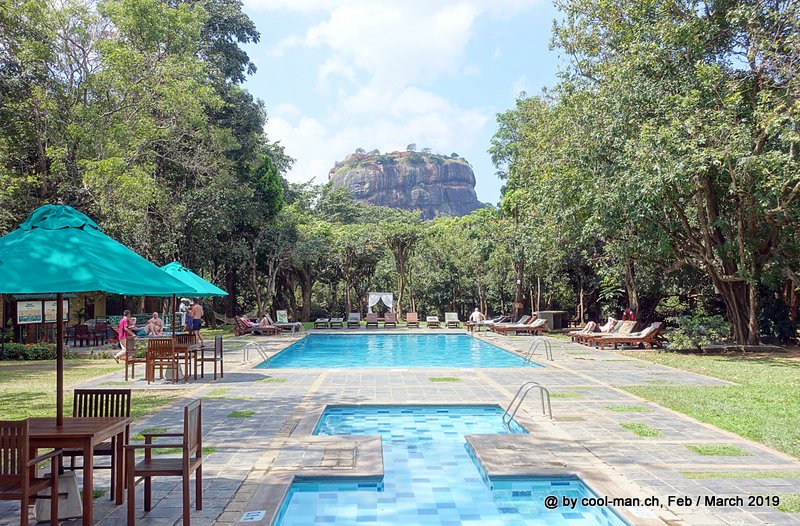
View from Pidurangala Rock
You can enjoy the best view of the famous neighboring rock Sigiriya from the 200 meter high Pidurangala rock.
I was lucky that this monkey came up. I quickly got myself into the best position to take this picture.
Sigiriya Rock seen from Pidurangala Rock

The Sigiriya Rock in the sunset light

The Sigiriya complex is surrounded by moats …
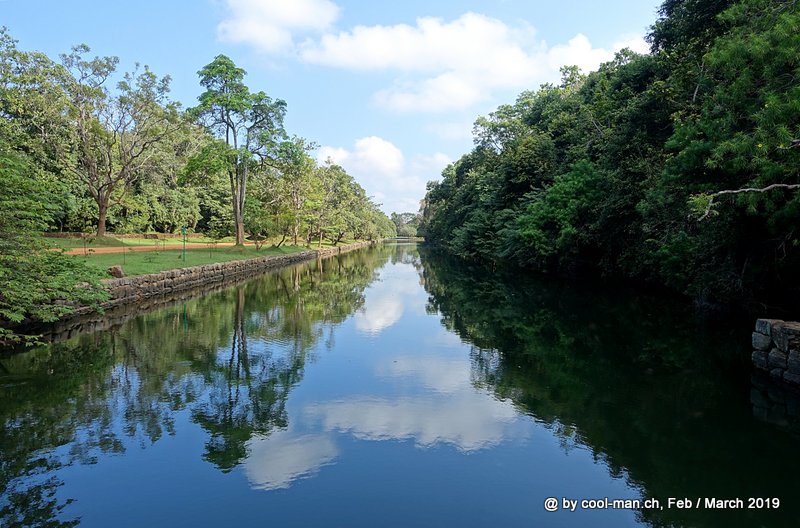
… where crocodiles abound according to the signs.
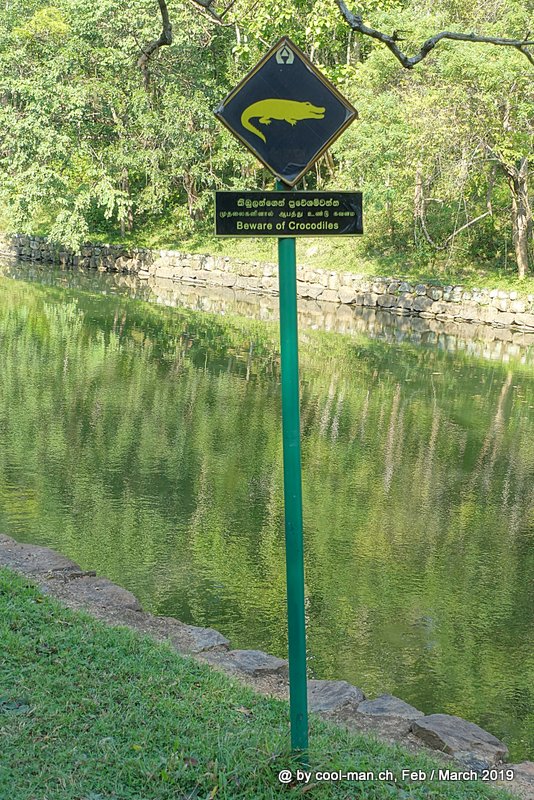
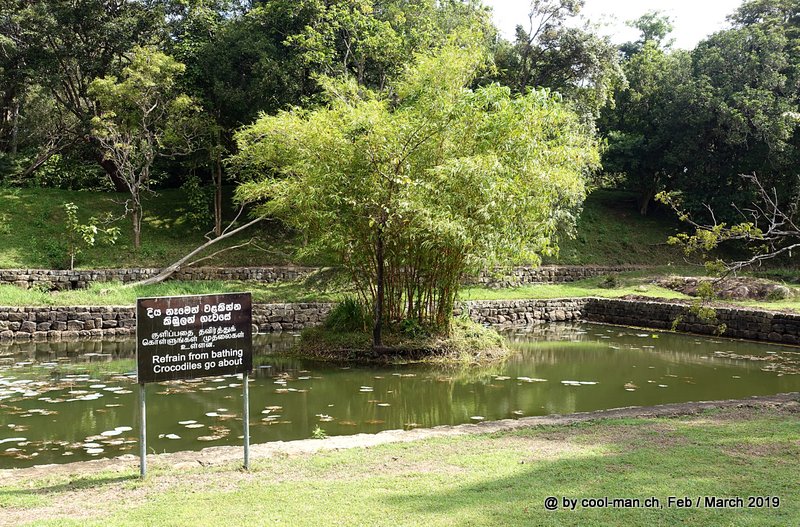
Yet this man bathed in the moat. Later I learned that crocodiles are rare and the population is warned when they appear.
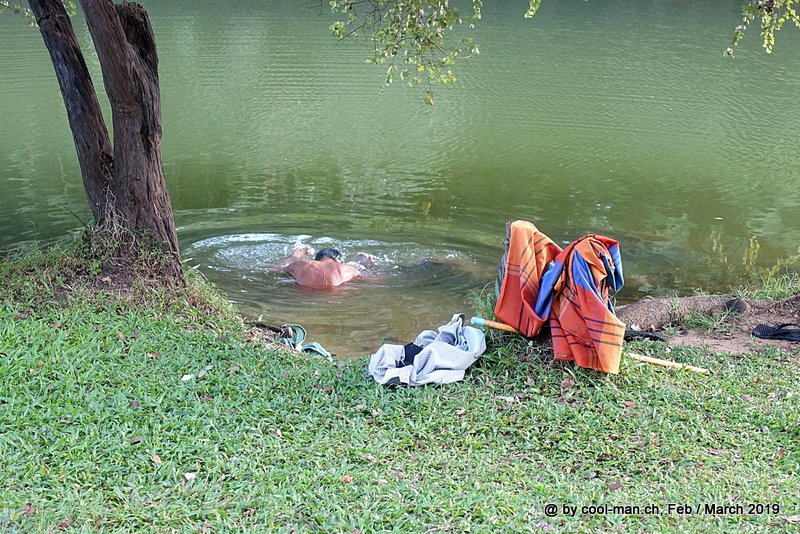
I climbed Sigiriya Rock early in the morning before 7am. Only a few people were on their way at that time, so the ascent went without any problems. As soon as the tour groups arrive, there are queues on the stairs, as you can hardly overtake.
Two big lion paws are the only thing left of a huge brick lion that stood at the beginning of the last part of the ascent. Unfortunately the rusted barrier in front of the paws is so ugly that I didn’t take a picture of paws.
Stairs make the ascent easier.
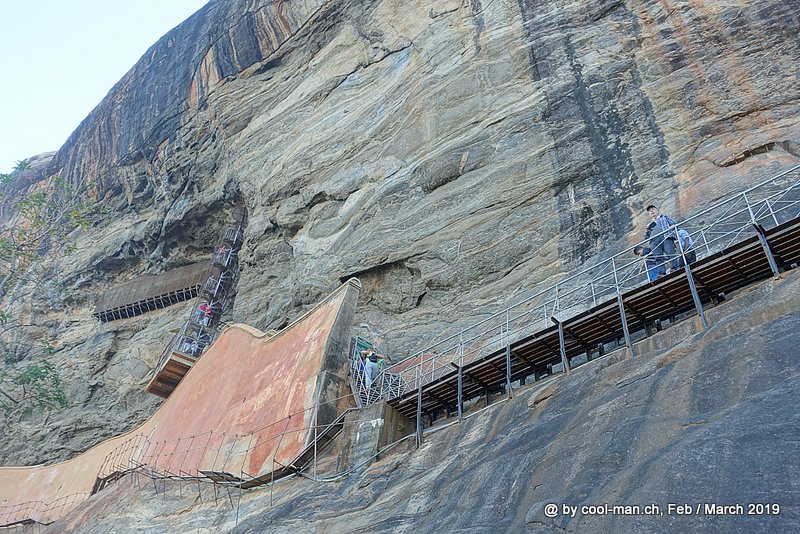
On the Sigirya rock there is a large plateau with various structures, terraces and stairs from the time of the former monastery.
A water basin


From the rock there is a wide view over the surrounding landscape.
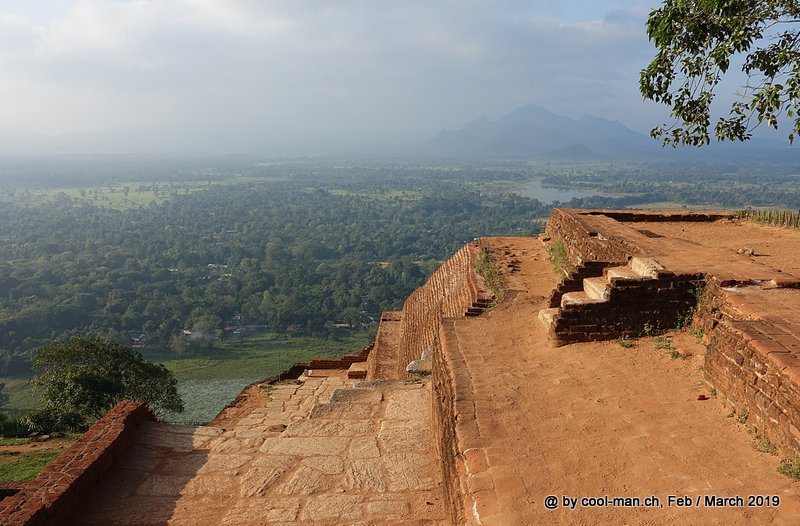
At the foot of the rock there is a garden landscape.

In Sigiriya elephants are kept in chains for rides. There are also wild elephants in the area, which are mainly active at night and have killed people in the past.

Polonnaruwa
55 km from Sigiriya is the former royal city of Polonnaruwa, which reached its peak about 850 years ago and has also been declared a UNESCO World Heritage Site. The bicycle was the ideal means of transport to discover the sights scattered over a few kilometers.
Kiri Vehera
This 1,500 years old stupa is the best preserved unrestored building in Polonnaruwa.
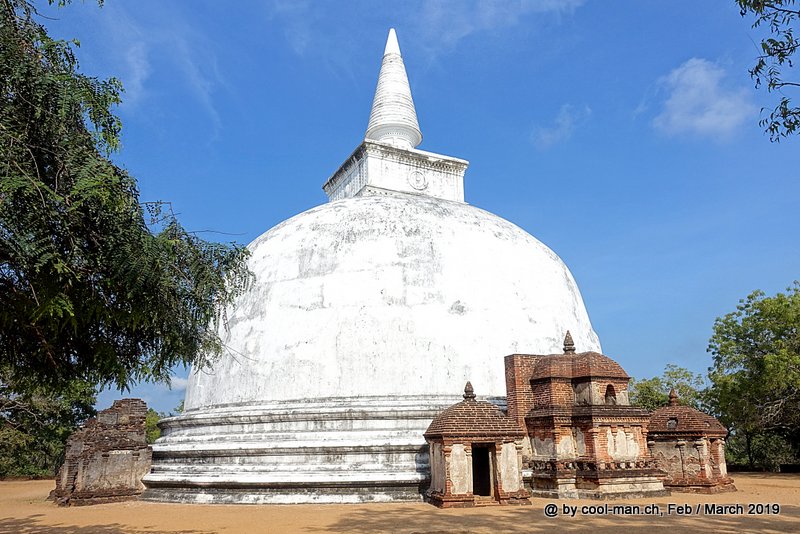
Rankoth Viharaya Stupa
Temple offerings at the Rankoth Viharaya Stupa, the largest in Polonnaruwa
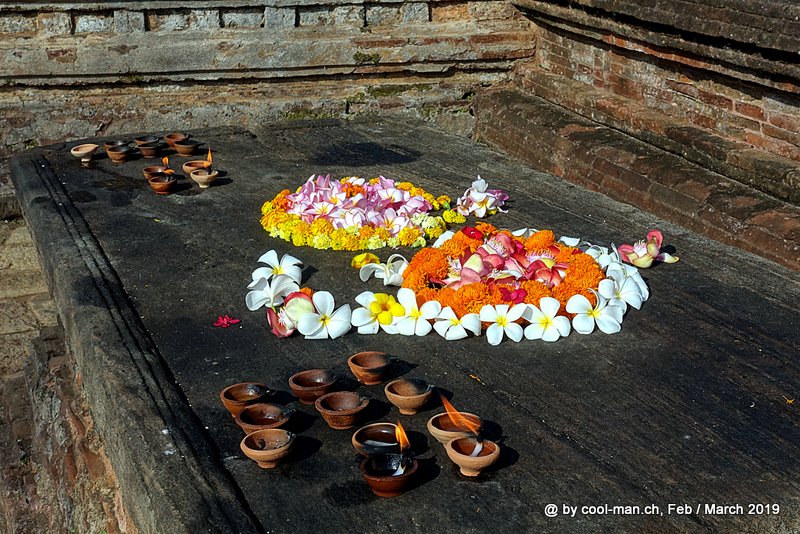
Gal Vihara
These statues represent the culmination of sculptural art at the time. The artists would probably turn in their graves if they saw the ugly roof over their statues. Now it is no longer possible to take photos of the statues without the roof being on the picture. The tourist brochures still contain pictures from the time before the roof was constructed.

On the following pictures I have removed the roof. But you can still see the shadow of the roof construction.

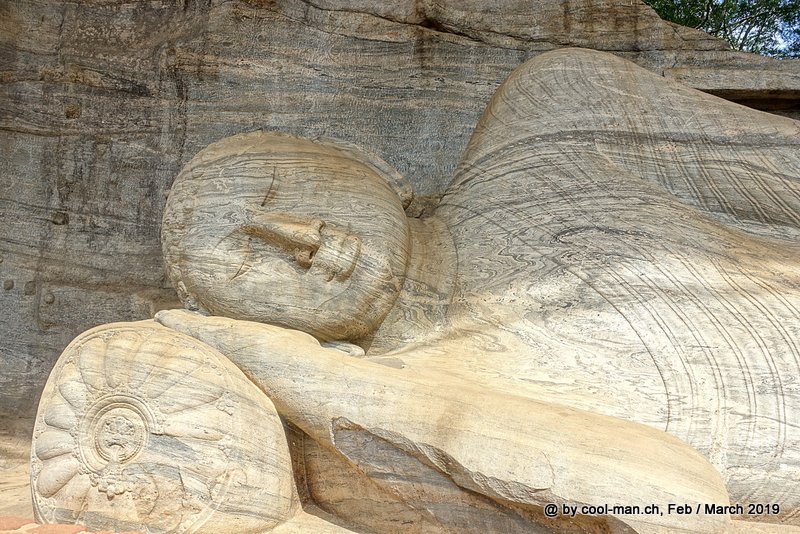

Vatadage
A Vatadage is a round building, which was built around a Stupa and can only be found in Sri Lanka. The Polonnaruwa Vatadage was built in the 12th century AD and probably housed the Buddha’s tooth relics which is now kept in Kandy.


I met this man at the river after my visit to the ruins.

Branched roots of a tree

Huluru Eco Park
I could observe many peaceful elephants in the wild in the private Huluru Eco Park. I visited the park one afternoon from Polonnaruwa. It was well visited, because this year many elephants migrated to this park. Sometimes several jeeps grouped around a herd of elephants. Nevertheless I liked this park, because I could sometimes observe the elephants very close.
We were five in the group in an off-road vehicle.

The elephant mother watches the pups playing with their trunks.
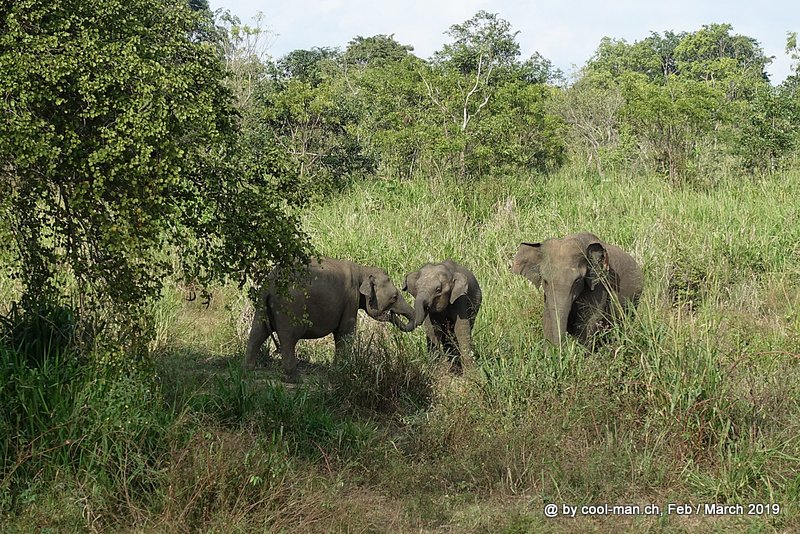
Dimbulagala Temple
A Buddhist hermitage is located 23 km from Polonnaruwa on the 545 meter high Dimbulagala Rock. At the start of the trail monkeys cavort on the power lines.
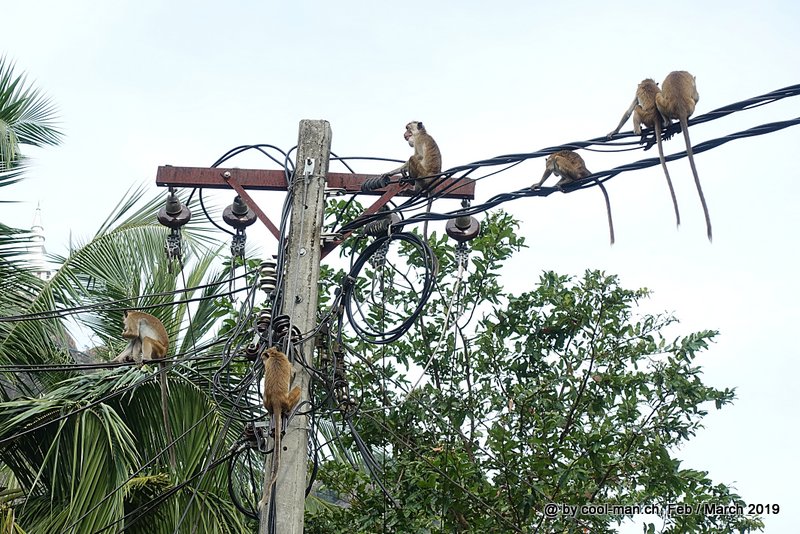
On the way to the hermitage: A monkey and the statue of the god Ganesh
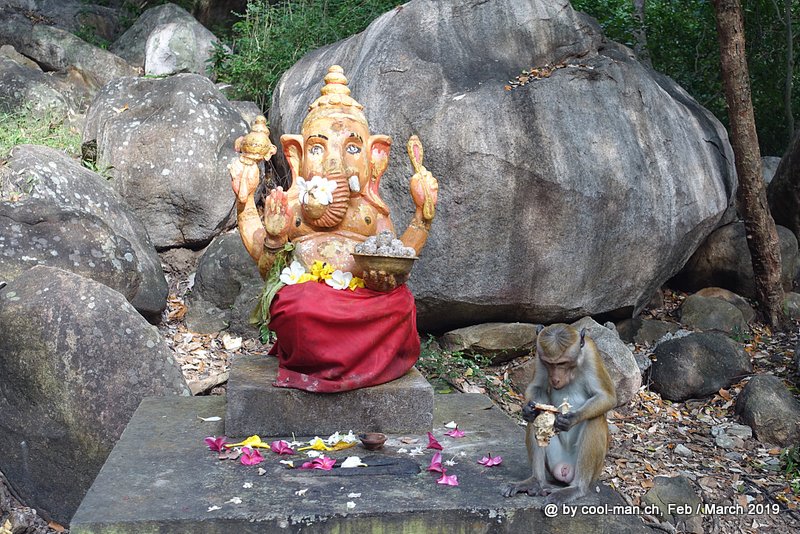
The tower of the hermitage

In the hermitage
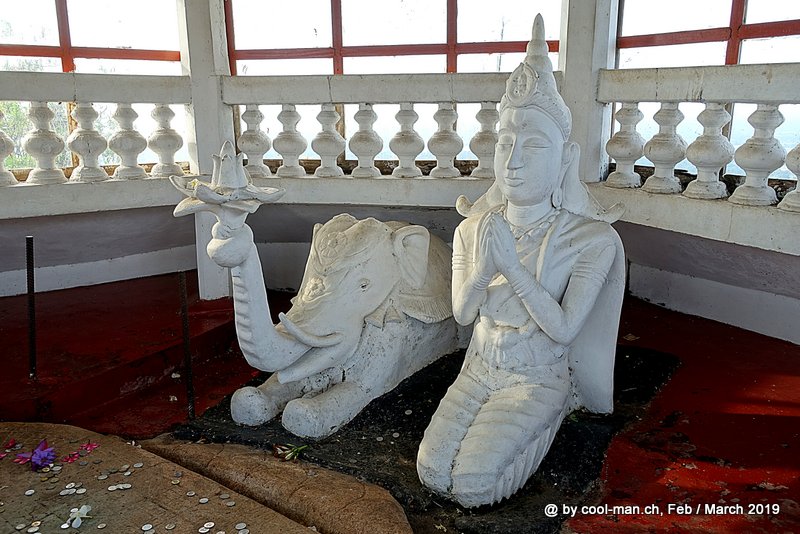
Unfortunately the mobile communication antennas on the rock affected the view and the atmosphere.
Anuradhapura
My next stop was another royal city and UNESCO World Heritage Site, Anuradhapura, about 100 km from Polonnaruwa. Anuradhapura was a royal city for more than 1,000 years from 380 B.C. and therefore much older and longer inhabited than Polonnaruwa. In the course of time the monuments fell into disrepair. In 1884 the first excavations were started by the British and meanwhile most of the stupas have been restored. I also explored this place by bicycle.
Thuparamaya Dagoba
The Thuparamaya Stupa (a Stupa is called Dagoba in Sri Lanka) was built about 2,300 years ago and is therefore the oldest Stupa in Sri Lanka.
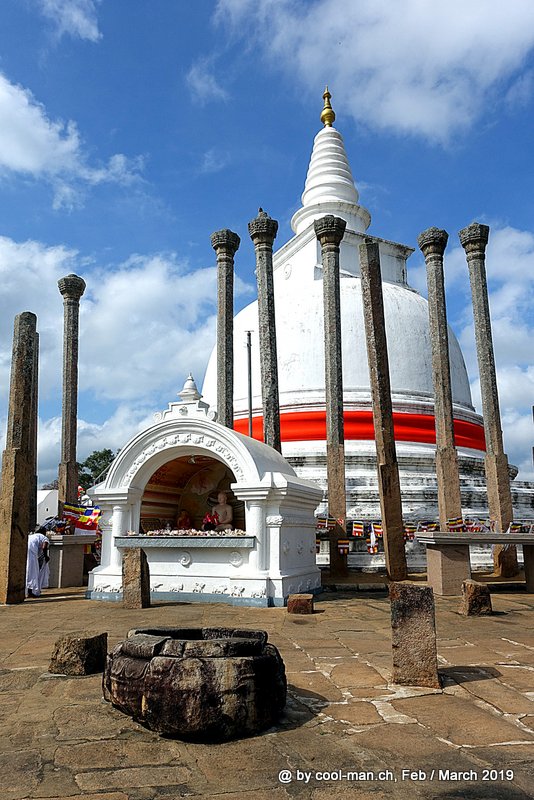
Worshiping Buddha
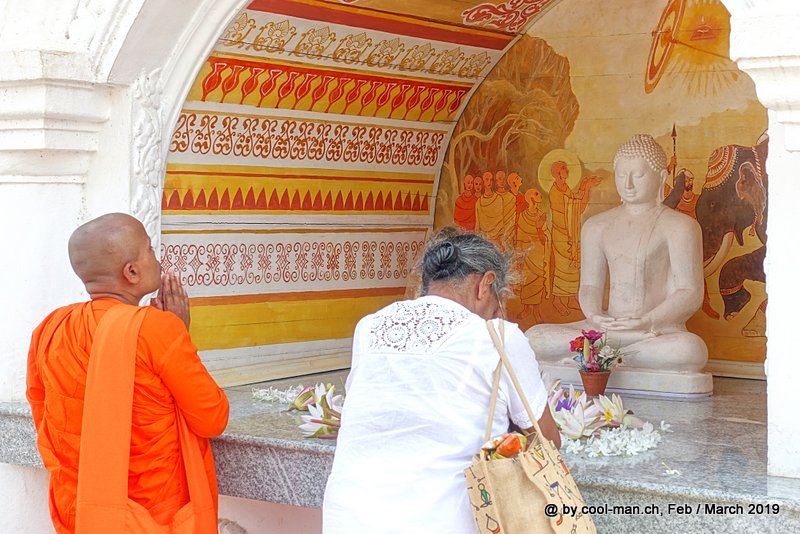
Abhayagiri Dagoba
Built more than 2,100 years ago, this 75 metre high stupa was the center of a monastery inhabited by 5,000 monks.
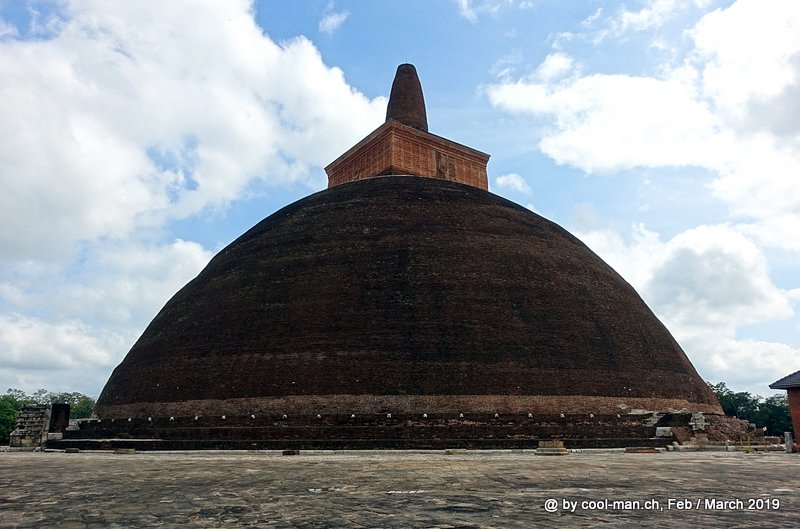
Detail of a moonstone
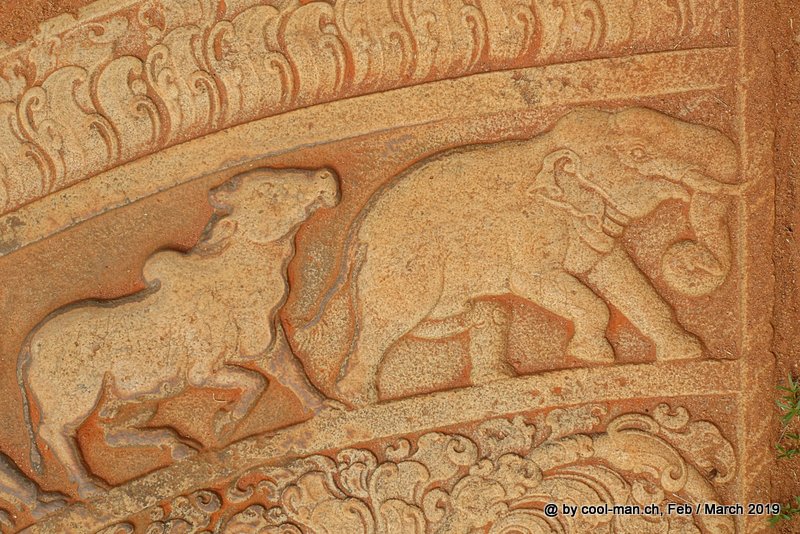
Jetavanarama Dagoba
When it was built in the 3rd century A.D., this stupa was 122 meters high, the tallest stupa and the third tallest building in the world.

It consists of 93 million bricks!

During my visit there was a holy festival. These women made garlands of flowers.

And these three plucked petals that were later used for decoration.
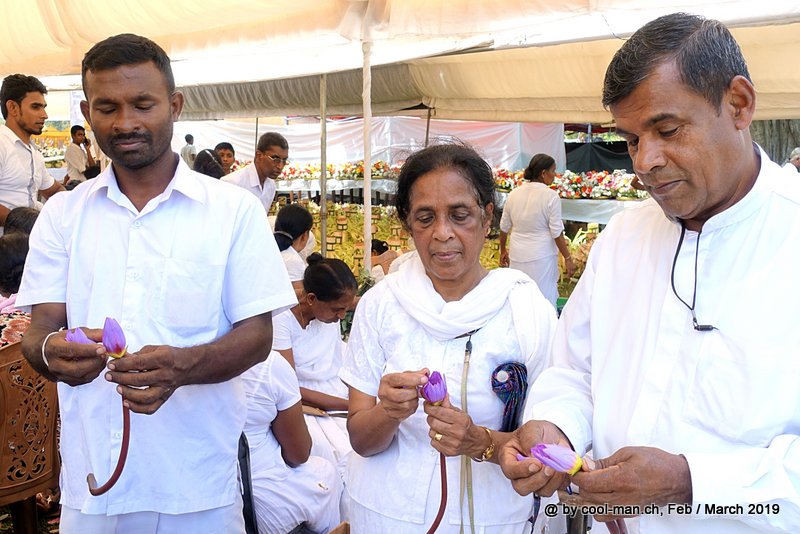
Ruwanwelisaya Dagoba
The Ruwanwelisaya Dagoba was damaged by Indian troops in the course of time again and again. Today, at 55 meters, it is much smaller than when it was completed in 140 BC.
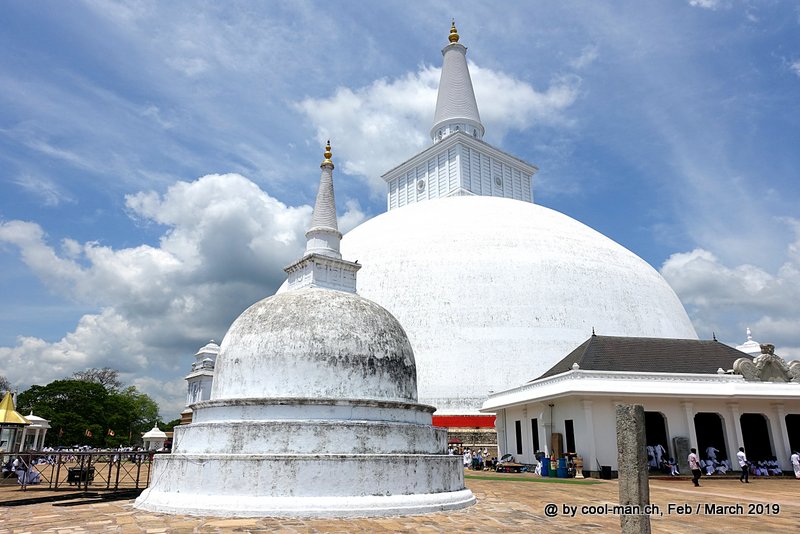
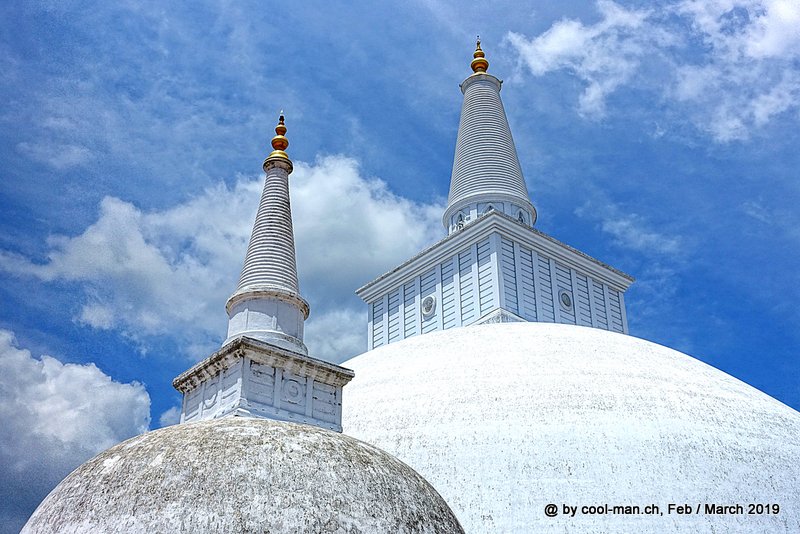
Pray and hope
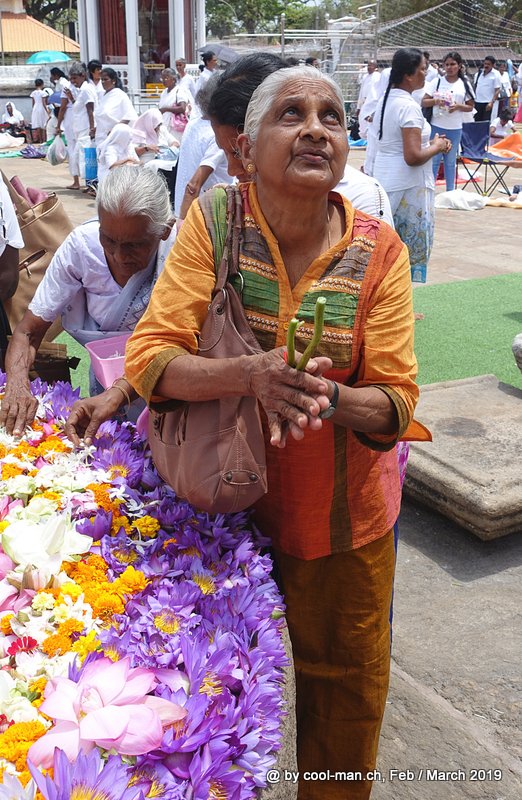
This Grizzled giant squirrel stopped by during my lunch break

Mirisawetiya Stupa
This stupa was built in 1993, after the original stupa, which had been restored only shortly before, collapsed in 1987.
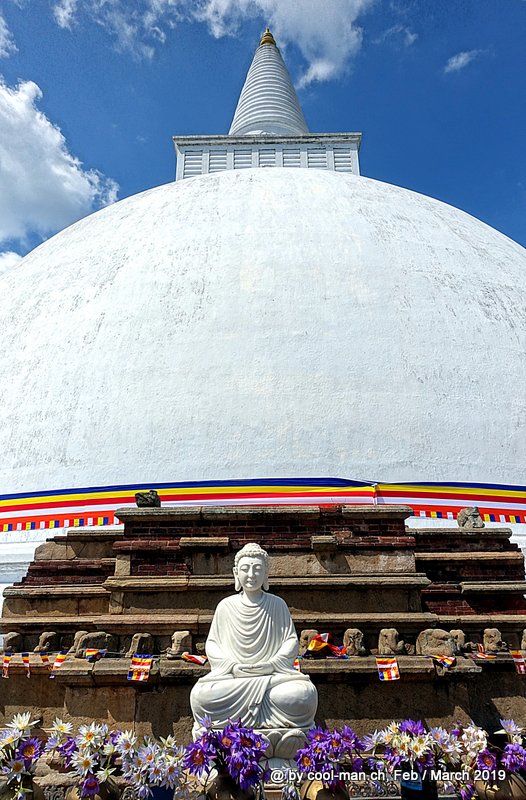
Royal Pleasure Gardens
The Royal Pleasure Gardens are located not far from the town on the shore of Lake Thissa Wewa.
On the shore of Lake Thissa Wewa
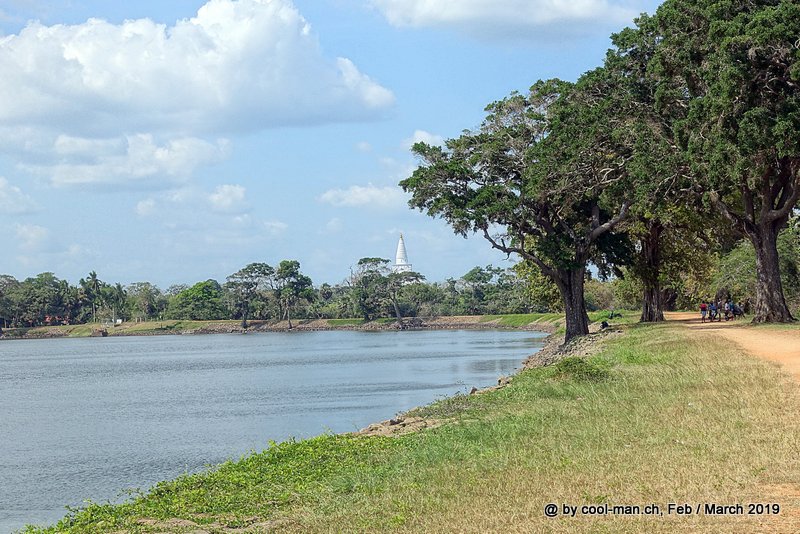
In the park there are two water basins with elephants carved in stone.
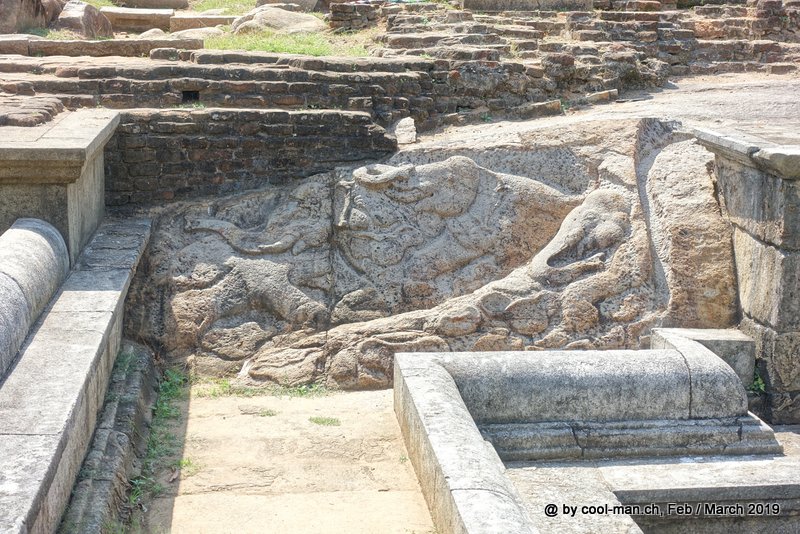
The elephants can be found in the middle of this picture on the left.
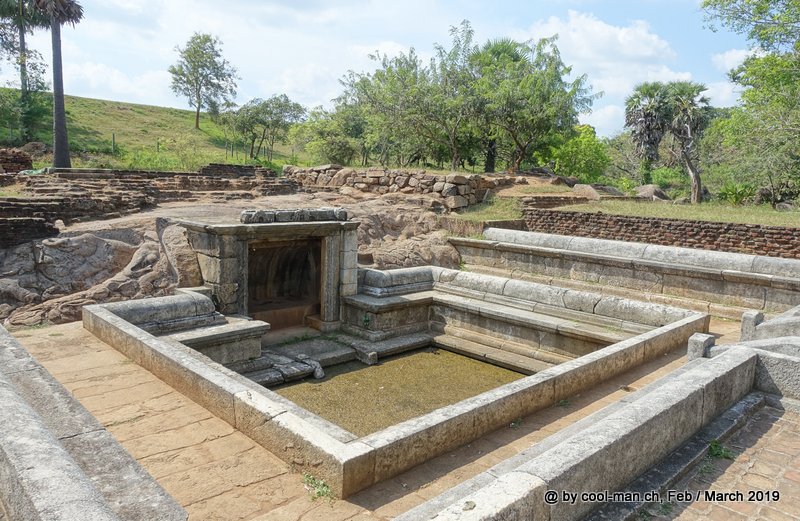
Sakwala Chakraya (Star Gate)
This petroglyph is somewhat hidden on one side of a rock in the Royal Pleasure Gardens. It is several thousand years old and shows a kind of map, for which there are different, partly adventurous interpretations.
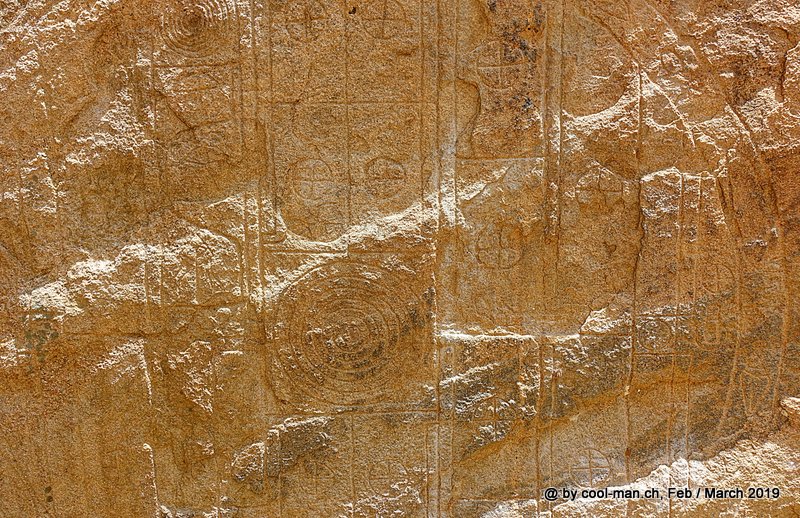
Back in the city of Anuradhapura two goldfish are sold in a plastic bag for the equivalent of CHF/USD 0.60 at this stand.
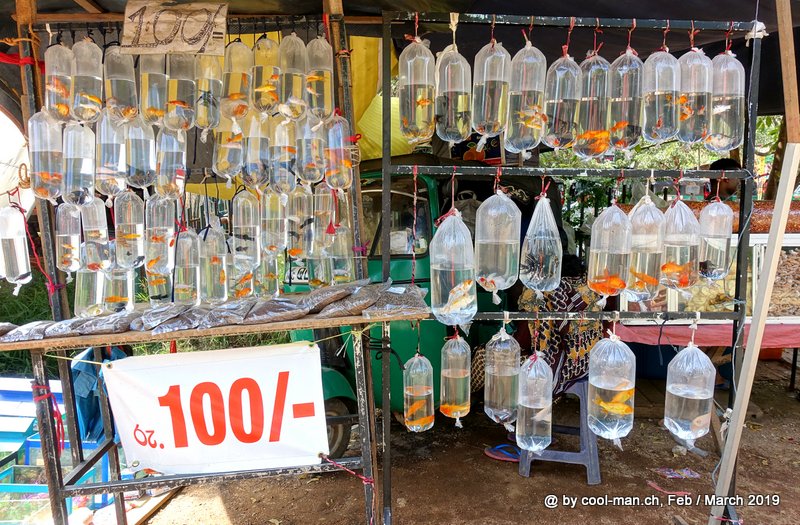
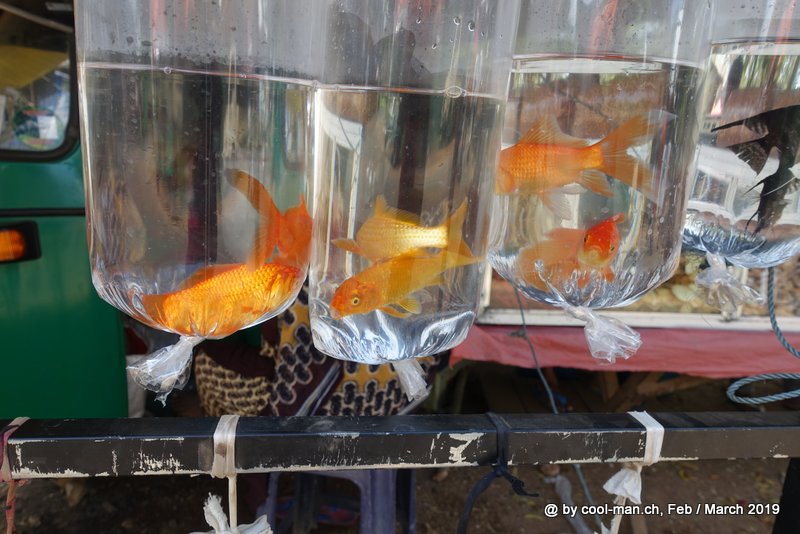
Mihintale
In the small town of Mihintale, 13 km from Anuradhapura, Buddhism has its origin in Sri Lanka.
The stupas stand on a hill that can be climbed over 1,840 steps.
Kantaka Chetiya
Further steps lead to the partly preserved stupa Kantaka Chetiya, which is one of the oldest stupas in Mihintale with an age of about 2,200 years.
An elephant frieze at Stupa Kantaka Chetiya

Ambasthal Dagoba
The Stupa Ambasthale marks the place where King Devanampiya Tissa of Anuradhapura was converted to Buddhism by Mahinda, son of the Indian ruler Ashoka, in 247 B.C. and thereby established Buddhism in Sri Lanka.

The white Buddha of Mihintale
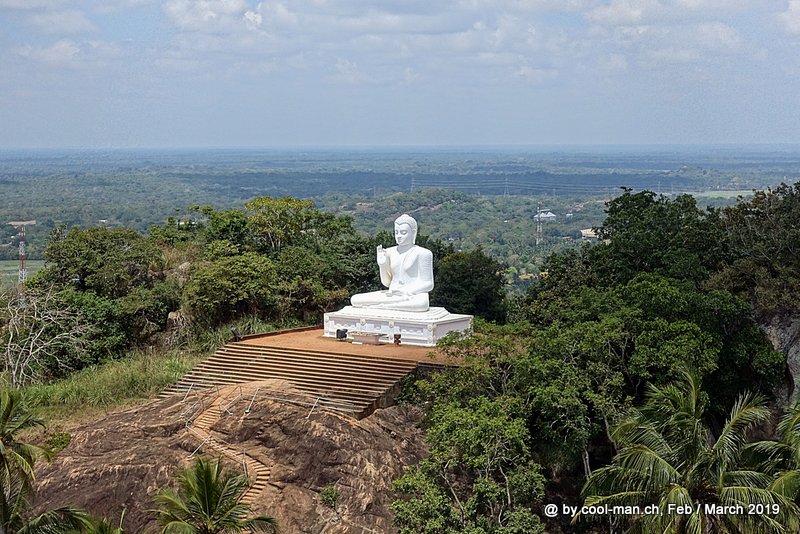
By train I traveled 200 km to Jaffna, which is located in the very north of Sri Lanka.
You can find the second part of my Sri Lanka travel report here.
This text is an automatic English translation from the German original by deepl.com